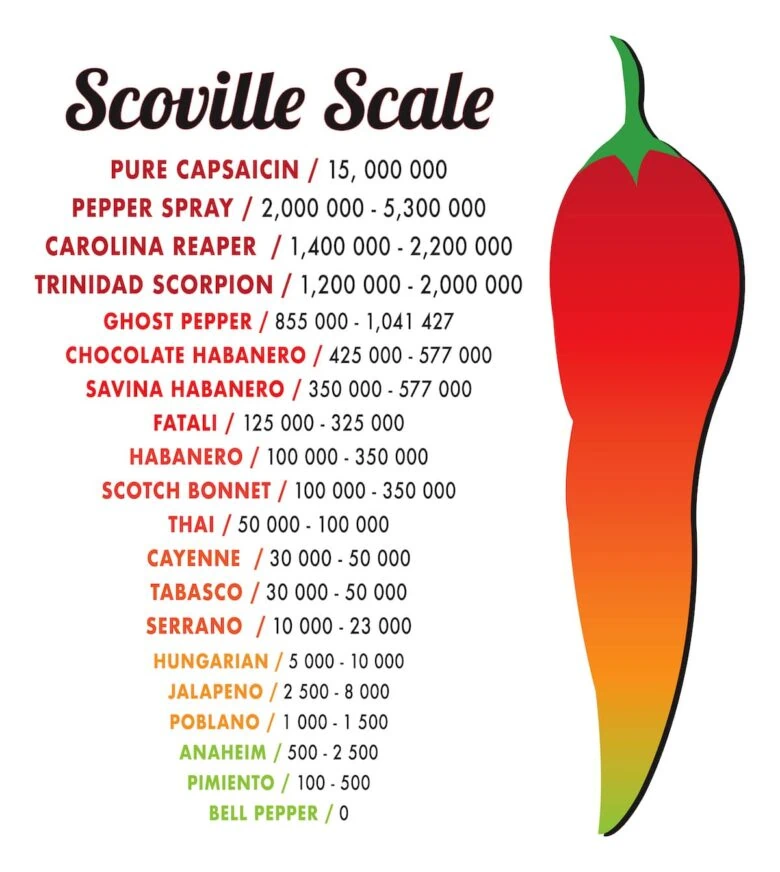10 Flavor-Packed Health Benefits of Shishito Peppers
This post may contain affiliate links. As an Amazon Associate I earn from qualifying purchases. Please read the disclosure policy.
If you’re a lover of Japanese, Chinese, and Korean food like I am, chances are shishito peppers have made their way into your diet. I always enjoy ordering an appetizer of blistered shishito peppers sprinkled with coarse sea salt at sushi restaurants. Apart from their yummy taste, this green plant-based food, native to Asia, comes loaded with lots of health benefits.
Low in calories, nutrient-rich, antioxidative, and inflammation-fighting, shishito peppers make great additions to any meal–especially when you pan-sear them in a bit of olive oil or sesame oil with a sprinkle of sea salt.
Learn about the health benefits of shishito peppers, their origin and nutritional components, and how you can use these peppers in your cooking.

What Are Shishito Peppers?
Shishito peppers, from the species capsicum annuum, originate from East Asia. Popular in Japanese cuisine, these small bright green peppers are about the size of a jalapeño pepper with slightly wrinkly thin skin.
They have a unique flavor that is lighter and sweeter than bell peppers with some mild heat (usually milder jalapeño or habanero peppers). They are very similar to padron peppers (one of my favorite Spanish tapas), but shishitos are slightly sweeter and milder in flavor. You can usually find shishito peppers at specialty grocery stores, Asian markets, or farmer’s markets.
Are Shishito Peppers Spicy?
One thing that makes shishitos special is that occasionally, a few peppers in a batch can be extra spicy, so eating them can be a bit of an adventure. You have to be careful with these peppers if you’re sensitive to spice!
Shishito peppers can vary quite drastically in spice levels—in fact, they range between 50-2500 Scovilles (the pepper heat scale). Most shishitos will be between 50-200 Scovilles, about the heat level of a pepperoncini or pimiento. But the random hot ones can get up to 2500 Scovilles, about the spiciness of an Anaheim chili or Jalapeño–still manageable when you compare them with ghost peppers which can be around 1 million Scovilles!

Health Benefits of Shishito Peppers
Immune-boosting
Adding shishito peppers to your diet is a great way to support a healthy immune system. These peppers contain essential nutrients, including vitamin E and B6, which can help protect your tissues and cells from damage.
Other immune-boosting nutritional components of these peppers include potassium and high vitamin C content.
Promotes A Healthy Digestive System
One thing shishito peppers do best is promote digestive health. When these peppers are ingested, digestive enzymes that break down foods and bring about digestion are produced.
Plus, the dietary fiber contained in these peppers plays a crucial role in maintaining optimal gut health and encourages normal intestinal function.
Aids Eye Health
Another notable health benefit of shishito peppers is that, when consumed regularly, they help lower your chances of developing age-related vision disorders.
Shishito peppers contain vitamin A and carotenoids; these properties may preserve eyesight by helping prevent macular degeneration and night blindness.
Supports Skin Health
Earlier, I touched on the significance of vitamins C and E in shishito peppers as immune-supporting properties. These same nutrients also support skin health.
Vitamins C and E promote collagen production, which is essential for skin repair. Incorporating these peppers into your diet is a great way to care for your skin.
Fosters Healthy Dieting
No matter your dietary preference, shishito peppers make great meal additions. If you’re eating for weight loss, these peppers have very few calories if you don’t add much oil. Shishitos also taste great with the addition of soy sauce, chili pepper flakes, garlic, lemon juice, or lime juice.
You simply can’t go wrong with these peppers. Plus, their fiber content makes you feel full and encourages weight management.
Supports A Healthy Heart
Shishito peppers have been found to contain lots of bioactive compounds and antioxidants. These properties help protect the body from the harmful effects of free radicals and reduce oxidative stress.
As a result, one of the most significant health benefits of these peppers is improved heart health. The compounds previously mentioned can help prevent or delay cardiovascular disease.
Supports Fetal Development
Proper fetal development can be promoted amongst pregnant individuals by introducing shishito peppers to meals.
Shishito peppers contain vitamin B9, otherwise known as folate, which is an organic entity essential for DNA synthesis and cell production.
Lowers Risk of Cancer
Shishito peppers are rich in antioxidants and bioactive compounds that help fight off free radicals in the body.
Another significant health benefit of these peppers is the potential protection they provide against certain types of cancers.
The antioxidants in these peppers play a significant role in reducing the development of cancer cells.
Promotes Oral Health
Shishito peppers are a great source of calcium, which improves dental health by strengthening the gums and outer shells of teeth.
They also contain magnesium and potassium, minerals known for promoting bone health.
Helps with Inflammation
Inflammation is the basis for many chronic diseases, so maintaining an anti-inflammatory is vital. Capsaicin is an organic component contained in shishito peppers. It supports blood circulation, pain relief, and anti-inflammation.
Shishito peppers are the perfect food option for you if you’re looking to improve overall health and make your diet more anti-inflammatory.

What is the Nutritional Value of Shishito Peppers?
Shishito peppers are a great source of essential vitamins, such as vitamins C and A. They are also low in calories and contain lots of minerals and fiber.
Shishito peppers contain vitamins C, A, E, and B6, along with potassium, calcium, and magnesium. They’re also rich in antioxidants, pigmented nutrients called carotenoids, and the bioactive compound capsaicin. Typically, seven of these peppers contain about 15 calories.
Shishito peppers typically contain little to no sodium or saturated fats. Trans fats don’t naturally occur in shishito peppers and would only be present if hydrogenated oil is added to them.
What is Special About Shishito Peppers?
Shishito peppers belong to the capsicum family and have played a culturally significant role in fostering Japanese communal dining practices for centuries. These peppers are commonly served as snacks or appetizers in Japanese bars or restaurants.
Quite a number of things make these peppers popular among consumers. They go in almost any type of dish and can be cooked in various ways, including skillet sauteing, stuffing, and deep or pan frying. The best part is that they’re relatively inexpensive!
The health benefits of shishito peppers are innumerable, so it’s no wonder that they’ve gained considerable popularity over the years and are generally considered special food items.
Another feature that makes these peppers special is their mildly citrusy taste, slightly sweet flavor, and occasional spiciness. Most shishito peppers are mildly spicy, but one in ten packs a spicy punch.
How Long Do Shishito Peppers Last?
If your shishito peppers were super fresh when you got them, they might last up to two weeks stored in a cool and dry place like the crisp drawer of your refrigerator. They will last longer if pickled (and they taste great that way too!).
Pickled Shishito Peppers
You can also try pickling these peppers to increase their shelf life—pickled shishito peppers, when left sealed, last 3 to 4 months in the refrigerator.
Refrigerated pickled unsealed shishito peppers should be consumed in 3 to 4 weeks.
Signs that your pickled peppers are no longer fit for consumption include discolorations, odd smells, and, in rare cases, the appearance of mold.
Keep in mind the following tips when attempting to pickle shishito peppers:
- The slightest alterations in vinegar, water, or food proportions in your pickling recipe provide ample room for toxin-producing bacteria to grow. So make sure you follow whatever research-tested pickling recipe you have to the letter.
- Traditional home-canning jars or recycled commercial jars are a big no-no. They won’t make it through the canning process.
- It never hurts to sterilize your jars before using them, regardless of the presence of vinegar in the pickling process. Make sure you boil your jars in water for 10 minutes and leave them out to cool before using.
- Use new jar lids for a tighter seal.
- Remove screw bands from stored and processed jars to prevent rust from developing.
- Waxed supermarket peppers are not ideal for pickling. Shishito peppers must be fresh, clean, uniform, and with minimum defects to achieve the best results.
Can You Eat Too Many Shishito Peppers?
Although we don’t necessarily know what constitutes too many shishito peppers, the capsaicin content could lead to stomach, mouth, or intestinal irritation if consumed excessively.
Capsaicin is the active component in peppers that gives them their spicy flavor. It has the uncanny ability to trigger the heat receptors in your skin. In extreme cases, it can jerk your nervous system into functioning as though your body is overheating.
We all know that too much of anything is bad for you. So, to be on the safe side, consume these peppers in moderation.
You can eat them raw, incorporate them into various dishes, or add them as a side dish to your favorite meals.
However you choose to eat these peppers, it is important that you pay close attention to how your body responds to them, especially if this is your first time having them in your diet.



